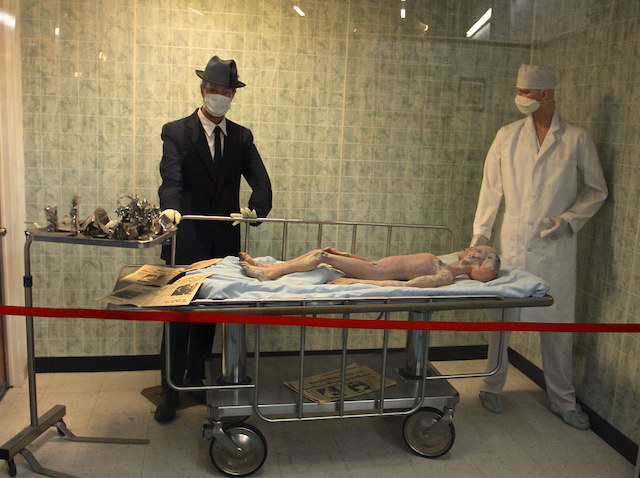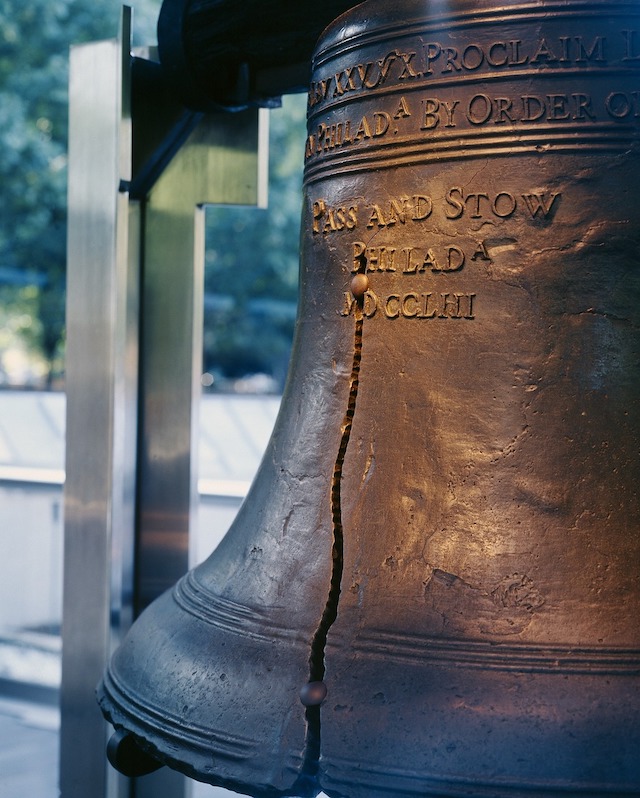
Hoaxes are part of our society now more than they ever have been. The term “fake news” has become something we all say but, it is interesting to note that it was barely ever searched for on Google just five years ago. It had a popularity index of less than ten until late 2016 and it has dropped off slowly but it has never gone back down to where it was. Interestingly enough, it skyrocketed in popularity almost overnight. Of course, we all know why the term became so popular but it says a lot about society in general. During the same timeframe that this term bounded to the top, so did a very interesting related term, “Snopes.” If you don’t know about the Snopes website, it is a fact-checking website that has been around since 1994. It is the most trusted resource for determining if a story is real or happens to be the ever-present fake news.
Facebook and plenty of other social networks such as YouTube have also added tools into their websites that will present you with information about the source of a story and will attempt to sort out the validity of a claim. Because of all of these changes, it is easy to think about hoaxes as being new. History shows us that that is certainly not the case. People have been creating hoaxes for centuries. Some of them have been pretty lighthearted in the grand scheme of things but, unfortunately, some of them really haven’t. There is just something people have always found fun about pulling one over on someone. While most of us will never understand the quiet satisfaction hoaxers get by sharing crazy news stories online that have no basis in reality, we’ll never be able to avoid it. Your Facebook timeline is probably full of crazy stories that simply aren’t true. A recent one circulating details the story of an unfortunate employee at a crematorium who was accidentally cremated while taking a nap. It’s frustrating to have to tell your grandparents, or even your parents, that they need to be more diligent; however, hoaxes get so much bigger than that. It’s easy to forget that when the flurry of fake news seems inexorable.

It’s Just a Prank, Bro!
There are a lot of things that drive people to create hoaxes. In some cases, it may not be entirely intentional. Someone might make a joke online and it takes on a mind of its own. Sometimes, all it takes is one person to misunderstand a satirical article or statement and then it goes completely viral to the point that people start believing it. The most innocuous reason that hoaxes begin is that tricking people can be funny when it isn’t about something serious; however, the majority of the hoaxes that get created today are much more malicious.
Some people create hoaxes because it makes them feel powerful. Making something up and having thousands of people believe you really does give people a false sense of power. They are in control of the story, the viewpoint that they want to project with the story, and so on. They want to create chaos and watch it unfold. This has become so much easier in today’s society because of the power of social media. As an example, Facebook put forth a press release in 2015 that presented inflated statistics about video viewership. Because such a powerful corporation was touting the information as completely true, there was a trickle-down effect that we are still witnessing the effects of to this day. Writers and editors for a number of news sites ended up losing their jobs and there was a push to video content across all platforms, even though the original information wasn’t true.

Some people create hoaxes for attention or financial gain. This is something that happens almost every year. Johnny Bobbitt Jr. was presented to us as a homeless veteran whose act of kindness echoed around the world when it was reported that he gave his last $20 to a woman that ran out of gas. The story was completely fabricated but it still went viral and the subsequent GoFundMe campaign raked in close to half a million dollars. Thanks to the internet, we are bombarded with marketing campaigns, scams, YouTube stars committing outright crimes and then pulling out the camera-ready “just kidding” smile before they can face any consequences, and so much more. But, where did this culture come from?
The truth is like you read earlier, people have been creating hoaxes for a variety of reasons for hundreds of years. The real surprise is that people have been falling for this type of deception since it first began.
Why Do We Keep Falling For It?
The good news is that it isn’t because we are stupid. It’s easy to understand how difficult it is to separate misinformation from legitimate fact with the way that society relies so heavily on the internet now. But, back in the day, it was almost just as bad, it just never received a lot of coverage because there was no internet. Most people got their news from print, which could be drastically unreliable depending on where you were in the world. It was difficult and expensive to create hoaxes, so they were more likely to be believed in the past. Even in the early days of the internet, people didn’t truly understand how easy it was to throw together an article full of blatant lies or to photoshop an incredible photo. Because people didn’t understand how it was possible to create such an elaborate ruse, they took what they saw at face value.

Even now that we know better, we’re still psychologically wired to be vulnerable to this sort of thing. Our brains try to function as efficiently as possible, so we don’t always react logically when we are presented with shocking information (especially because we’re inundated with it). People make split-second decisions based on their worldview, opinions, cultural conditioning, and plenty of other factors. A meme or hoax that has a coherent narrative that seems even slightly plausible is the perfect recipe for pulling the wool over everyone’s eyes. And it has happened plenty of times! Here is a look at ten hoaxes that absolutely fooled everyone. Some of them are harmless, some of them are kind of scary, and all of them captivated the world for a little while before being ultimately exposed as false.
The Mechanical Turk

This is a great example of how hoaxes have always existed. This took place all the way back in 1770 and it is probably one of the most enduring hoaxes of all time. It fooled people all over the world for nearly 100 years before it was finally exposed. The Turk was a machine that consisted of a life-size model of a man wearing robes and a turban. It’s hard to fathom that something that looked vaguely like those fortune-teller cabinets caused such a stir in society, but wait until you hear what it did. This was a cabinet that held the Turk and a chessboard. Opponents would sit down and play a game against the machine.
Impressively, the machine would play a game of chess against the opponent. This technological feat is amazing enough for the time, but on top of that, the machine would almost always win. It became something of a show and it drew attention from all around the world. The Turk was toured all throughout Europe after it was created. People were completely baffled as to how it was possible that the machine could play so well. The Turk even defeated notable historical figures like Benjamin Franklin and even Napoleon Bonaparte. There were several books written about how the machine worked and its legacy throughout its run but they were all false.
The Turk continued stunning chess enthusiasts and bystanders for years as it was bought and sold and put up in various locations. It eventually found its final home at the Chinese Museum of Charles Wilson Peale. The hype slowly died down and it was retired to a lonely corner of the museum which is where it would sit until being destroyed in a fire in the year 1854. John Kearsley Mitchell, the final owner of The Turk, was Edgar Allen Poe’s personal physician. It was his son, Dr. Silas Mitchell who finally revealed the truth after the machine was destroyed.
He published a few articles for The Chess Monthly, a chess magazine that was first printed in 1857. In the first issue, Dr. Mitchell revealed how The Turk really worked. It wasn’t automated at all. There was a chess expert hidden in the machine that would play, and win, against opponents. By using a series of levers, someone hidden in the cabinet could operate the machine and play the matches. This was a great and enduring illusion; many people believed that The Turk might have even had supernatural powers. Even though the hoax was officially revealed in 1854, experts weren’t able to fully describe how it all worked for another century.
The Alien Autopsy Tapes

The Alien Autopsy Tapes are part of another enduring hoax. In fact, the hoax was so convincingly executed that there is still a significant amount of confusion around them today. Many alien enthusiasts and ufologists insist that they are, in fact, real; it is also widely believed in conspiracy theorist circles that any revelations about the hoax are all part of an elaborate cover-up of extraterrestrial life. The story began in 1947 with the Roswell Incident. While many people believe that this was a UFO crash, it has been reported that the craft was a United States Air Force weather balloon that crashed at a ranch near the city of Roswell, New Mexico.
Despite the official claims from the Air Force and other government bodies that the craft recovered was a weather balloon, this is still hotly debated to this day with many people believing, again, that this is part of a plot to hide evidence of intelligent life on other planets. The hoax came several years later, though. A man named Ray Santilli came forward in 1995 and stated that he received this incredible footage from a retired cameraman for the US military. The footage shows a full-scale autopsy of an alien, specifically a grey.
This hoax was immediately met with extreme skepticism. Experts in the scientific community disputed the validity of the footage right away; however, people still believed that the footage was real. Even with the new information that Santilli eventually presented, there are still thousands of people who are invested in this hoax. In a 2006 documentary, Santilli admitted that the footage he presented was not real. He admitted to staging the autopsy, filming it, and then going on to present it as real. He also claimed that the footage, original authentic footage, exists. His explanation was that he filmed this reenactment because of the poor quality of the original film.
While this isn’t as widespread of a hoax, we think that it is worth noting because of its immense staying power. Even after Santilli admitted to fabricating the entire video, there are still people that wholeheartedly believe in its validity and will assert that it isn’t fake. This is an interesting example of the insidiousness of hoaxes. There isn’t much harm in believing an alien video is real when it is presented as such, is there? But the fact that the man behind this hoax has confessed that it was all made up and it hasn’t changed the minds of so many people shows that larger hoaxes can be harmful and breed distrust.
Paul Is Dead

Celebrity death hoaxes happen so often that it is almost in our nature to fact check a story about a famous person dying before we even feel sad about it. There are several celebs who have fallen victim to it over the years like Michael Jordan, Justin Bieber, Tom Kenny, Will Smith, Jack Black, Britney Spears, and so many more. In the days of the internet, it’s very easy to dig a little deeper and determine that these are, in fact, hoaxes. Celebrities are often just a click away on social media and poke their heads out and declare that they’re alive and well. This wasn’t the case, though, in September of 1969.
It isn’t clear if this was the first-ever celebrity death hoax but it is undoubtedly the first one to go viral to the degree that this one did. At the peak of Beatlemania, several college students in the United States published articles in several magazines that Paul McCartney had died. They also insisted that he was replaced by a lookalike. These articles pointed to various “clues” in the band’s album art, lyrics, and the obviously-reliable hidden message you could hear when you played “Revolution 9” from the White Album backward. The articles claimed that you could hear the message “turn me on, dead man.”
There are several supposed “lyrical proofs” and because of the way the facts were presented, it spiraled out of hand quickly. In October of 1969, newspaper articles in legitimate papers started talking about the rumor and it was even discussed on radio stations all over the world. It was truly bizarre because nothing like this had ever happened before. Rumors kept flying and people truly believed that this hoax started by some bored (or conspiracy-loving) college kids was rooted in fact.
Because it wasn’t as easy for celebrities to make their presence (or corporality) known back then, it wasn’t until November of 1969 that Paul was able to set the record straight. He gave an interview to Life magazine to get the word out that he was very much still alive and that this had all been nonsense from the beginning. You would have thought that would be the end of it but it wasn’t. This was another hoax that spawned a lifetime of conspiracies surrounding it, with some people still believing that the real Paul McCartney is Long, Long, Long gone.
The Taco Liberty Bell

This was a harmless April Fool’s prank that was played out by the beloved Mexican-inspired almost-food chain, Taco Bell. In 1996, Jon Parkinson and Harvey Hoffenberg created this predecessor to the viral marketing campaign. Several people involved with the project would go on to say that it was the “most successful project” that they were ever a part of; it also won some awards in the advertising industry. At the time, the ad campaign cost the company close to $500,000 in today’s money but generated an estimated $40,800,000 in total revenue. Even though this was a marketing move, plenty of people were definitely fooled that day.
On April 1st of 1996, Taco Bell ran full-page advertisements in seven of the largest newspapers in the United States announcing that they had decided to purchase the Liberty Bell. The ads explained that they had done this as a move to help benefit the country by reducing the national debt and that they planned to rename it the Taco Liberty Bell. Entrepreneur Magazine considers this prank to be among the “Top 10 Successful Marketing Stunts” of all time; it is also considered to be among the top ten in the “Top 100 April Fool’s Day Hoaxes of All Time” by The Museum of Hoaxes.
It is so highly regarded not only because of the revenue it ended up generating for the chain restaurants but also because people truly believed it. As soon as people got their morning papers, they picked up their phones. Thousands of Americans called Taco Bell’s corporate headquarters as well as the National Park Service to air their grievances. There are newspaper articles that detail how angry people were. People said that it was wrong to commercialize such an important symbol of freedom, that it was impossible, unamerican, and more. It was fun while it lasted, though. Taco Bell came clean later that same day.
At noon, they released a statement that it had all been an April Fool’s joke. For the time, this was the biggest prank that had been played by a corporation of this size and it may have been the spark that lit that marketing fire. It’s common now, every year, for corporations across all industries to play jokes like this to gain some free press and some extra sales. It still works! However, people don’t believe it like they used to. Some experts that weighed in on this hoax say that it was easily successful because America was becoming way more commercialized back in the mid-’90s. It seems so normal to us now but this was something brand new, and the public absolutely took the bait even if it was only for a few short hours.
The Blair Witch Project

When it comes to marketing hoaxes, it could be said that Taco Bell walked so that The Blair Witch Project could run. Now, everyone knows that this movie is a fictional found-footage account of some really haunted woods or a cleverly-disguised murder plot. It’s nothing more than a scary movie. It was the first widely-successful found-footage film ever made and it is easily the grandfather of the genre. In fact, it is one of the most successful independent films ever made. The Blair Witch Project grossed close to $250 million worldwide even though it was created on a budget that is laughably small by today’s standards, costing just $60,000.
Leading up to the film’s release, the movie’s creators developed an extremely clever viral marketing campaign. An entire network of websites that described different aspects of the film’s mythology popped up all over the web. There was also a fake documentary created that described the legend of the Blair Witch that ran on the sci-fi channel throughout the year 1999. The entire campaign was designed to trick the world into believing that this was more than just a fictional account. Many people were convinced that this was a real documentary pieced together after all of the footage was recovered by chance.
The stage was set so that everyone would believe that three students traveled to Maryland to interview locals about the Legend of the Blair Witch, a woman who was accused of witchcraft and banned from her village. The story explains that all of the woman’s accusers and her children vanished a year later and it seems as though she has put a curse on the area because child murders and other awful occurrences just keep happening. When the students get there, they supposedly got way more than they bargained for and fell victim to the curse. The campaign explained that they had been missing for five years with no trace until this footage was found. People absolutely believed it.
The Snopes page for the film seems to have existed since the year 1999 and cites several other sources of information that were published in 1999; the page was last updated in 2007. This continued to be widely believed until the actors that played the film students began giving interviews. The way the film was produced helped add to the story as the actors were reportedly not given much information beyond GPS coordinates of where to go, some notes, and a few supplies. This really makes it feel like a documentary, so this hoax definitely fooled the world for a little while.
The Woman Who Wasn’t There

Unfortunately, as you already know, some hoaxes can take a very dark turn and nothing good comes from them and this happens to be one of them. Alicia Esteve Head, previously known by the alias Tania Head, orchestrated a senselessly malicious hoax on the world. She claimed to be a survivor of the attacks on the World Trade Center that took place on September 11th of 2001. She is a Spanish woman that lived in Barcelona, Spain for the entirety of her life until she relocated to the United States in 2003.
Sometime prior to 2004, Alicia created an online support group for survivors of the attacks; this was the first time it appears that she used the alias Tania. One of the founders of the World Trade Center Survivors’ Network found her group, and eventually, the two groups were merged. The purpose of the group was to provide financial support (among other things) to victims, victims’ families, and first responders. Curiously, Alicia never profited from the support and was even a donor to the fund that provided the support.
She claimed to have been in the South Tower during the attack and told a harrowing story about how she crawled through smoke and flames, sustaining significant burns but making it out alive. She also claimed that her soon-to-be husband Dave was killed in the North Tower that day. Her stories shifted, grew more grandiose, and became quite popular among survivors and those involved in outreach. She said a dying man passed on his wedding ring to her, that she was saved by one of the most notable first responders that aided in rescuing people after the attacks, and more.
Alicia was given speaking opportunities at universities, lead tours at Ground Zero, and even went on to become president of the WTCSN. In 2007, The New York Times published an article that would begin her undoing. She claimed to have degrees from both Harvard and Stanford, and that she had been working for Merrill Lynch in the South Tower. No institution had any record of her. Slowly, other parts of her story were brought to light and debunked and it was eventually revealed that she had been enrolled at the University of Barcelona on that tragic day. She abruptly halted all of her public appearances and relocated back to her hometown of Barcelona. An anonymous letter was sent to the Network claiming that she had committed suicide in 2008 but that wasn’t true either. She has been seen in New York since being exposed and has reportedly been unable to hold a job. Whatever she is doing currently isn’t known, nor is what she stood to gain from this senseless, disrespectful lie. If you’d like to learn more, the documentary The Woman Who Wasn’t There details her story.
Helicopter Shark

We couldn’t chronicle some of the most interesting hoaxes that fooled the world without mentioning what is documented as the first-ever internet hoax. In 2001, the photo editing that we have come to know was akin to witchcraft. Everyone knew that things were photoshopped but the majority of people didn’t know much more than that. So, when a photo of a massive great white shark jumping out of the water towards a member of the US Air Force trying to climb the ladder into an HH-60G Pave Hawk helicopter started getting passed around, everyone accepted it as fact.
Back in the days when everything was circulated through email, this image was passed around between friends, family, and coworkers being described as the National Geographic Photo of the Year for 2001. In reality, someone photoshopped the picture of a great white shark leaping out of the water in South Africa into a photo of the Air Force performing some training exercises in San Francisco. You can even see the Golden Gate Bridge in the photo, which should have tipped people off that it wasn’t credible. But, it’s like we said, photo editing was right up there with black magic. People were still learning how to use computers and the internet.
This is a very harmless hoax and, because social media didn’t really exist in 2001, it is difficult to pinpoint where it came from. There was a caption that was typically presented with the photo explaining that the shark jumped out of the water during training exercises in South Africa and that it had received the honor of Photo of the Year from National Geographic. This wasn’t even close to the truth; however, a couple of years later in 2005, the publication did release an article debunking the photo as a hoax.
The photo has been featured in videos, articles, and on various hoax websites over the years. Being the first internet hoax puts this picture in the nostalgia hall of fame right next to that gif of the dancing baby, if you ask us. It has been named one of the best internet hoaxes of all times on multiple occasions and, for some reason, people are still talking about it as if it were yesterday. As recently as 2018, National Geographic wrote about the Helicopter Shark hoax again in an article titled “How The Ultimate Shark Photo Went Viral.”
How to Charge an iPod with an Onion

This is another fairly harmless hoax from the earlier days of the internet before people understood the depths of trolling. HouseholdHacker is a YouTube channel and, formerly, a standalone website that has always presented lifehacks or quick solutions to help you save money, clean your house, and everything in between. Even though the channel has just under 500 videos, which is not a lot in our content-craving society, it has amassed nearly five million subscribers. This is the hoax that put them on the map and, most likely, the springboard for the rest of the lifehack content that is all over the web these days.
In 2007, on their now-defunct (as far as we can tell) website, HouseholdHackers posted a “how-to” on charging your phone in a pinch. If you ever found yourself without electricity, but you had Gatorade and an onion, you were in business. The video described the process using just enough pseudoscience that made it seem very believable. While this isn’t as potentially disastrous as those videos that talk about charging your phone in the microwave, it’s really just a roundabout way to waste a couple of dollars and a good thirty minutes of viewers’ time.
This was a viral video at a time that things did not go viral the same way that they do now. Within its first week, the video had garnered over four million views and had gotten the channel a lot of press. This video was featured on Salon, ABC News, and was even presented as factual on The Unofficial Apple Weblog. The channel launched in November of 2007 when this video was posted and, because of the attention from the hoax, was Youtube’s most subscribed channel the following month. All the way up until 2009, it camped out among the top 25 most subscribed channels on the platform.
The sheer amount of attention that this hoax brought to the channel is what makes it stand out. Experts have even weighed in on why it seemed so believable, citing the tone of the presenter and even the science behind the process as reasons for its success. This was one of the first viral internet hoaxes that made it all the way to the hit series Mythbusters. Of course, newscasters attempted this and failed, which laid the hoax to rest. But, Adam Savage’s slightly colorful description of this hoax was the final nail in the coffin.
The Boy in the Balloon

This hoax is first on this list that seems to have been started with actual malicious intent. It wasn’t that the family planned to hurt anyone or waste the resources that they ended up wasting; however, they started this debacle for personal gain. In October of 2009, the world sat at the edge of their seats as they watched a silver helium balloon float as far as 50 miles across the Colorado skies in the city of Fort Collins. The Heene family had called 911 to report that their six-year-old son was trapped aboard the makeshift craft.
Obviously, everyone was immediately invested in this strange story and wanted to make sure that their son, ironically named Falcon, was retrieved from the sky unharmed. The police followed the blimp, even getting National Guard helicopters involved. The balloon reached a peak altitude of 7,000 feet at some point during the hour-and-a-half-long journey. It eventually landed near the Denver airport and it turned out, Falcon was not inside the balloon. Some people reported seeing an object fall from the balloon, so then a massive land search took place. Still, there was no sign of the boy.
After several hours missing, he reappeared at the Heene’s residence. He had apparently been hiding in the attic. This seemed like a very scary mishap and everyone was glad for his safe return until, as always, kids say the darndest things. Falcon told Wolf Blitzer in an interview that his father told him to hide in the attic because they were going to get a reality television show after pulling off the stunt. It’s unclear how they expected that to unfold but we can guess that they didn’t expect to end up behind bars. That’s exactly what happened.
The Larimer County Sheriff’s Office did the math and all of the time and resources that were eaten up by the elaborate scheme cost them a staggering amount, at least $47,000. There was also the fact that all airport traffic had to be suspended when the balloon was in the vicinity. This led to the FAA imposing a fine of $11,000 on the family. When the Heene’s went to trial, the judge saw right through their behavior and knew that this had been a ploy to gain something financially and that they had exploited their child, the media, the emotional response of the public, and law enforcement. Falcon’s parents did time in jail, had to complete over a hundred hours of community service, spent four years on probation, and still paid heavily (to the tune of over $36,000 in restitution) for this ridiculous hoax that had the world watching.
Taylor Swift and The Horace Mann School for the Deaf

There are plenty of instances of extreme internet trolling that goes back before 2012, but this one highlights the power of social media and just how far some people are willing to go to get the chance to shout their victorious cry of “it’s just a prank, bro!” In 2012, the show VH1 Storytellers partnered up with the Papa John’s pizza chain and an education technology company called Chegg to do something cool for students in America. The school that received the most votes on the contest site would get a free concert from Taylor Swift, who was a rising country star at the time. Feels like a lifetime ago that the pop queen was bopping around in cowboy boots, doesn’t it?
Users on both Reddit and 4Chan jumped at the opportunity to turn it into a complete mess. Of course, at the time, it seemed pretty legitimate even if it didn’t make the most sense. Voters stormed the site and cast their ballot on behalf of the Horace Mann School for the Deaf and Hard of Hearing which is located in Alliston, Massachusetts. It didn’t take long for the school to take the lead and for a good little while, it looked as though the school would win. It ended up taking first place.
Once it was discovered what was really going on, of course, the school was disqualified. This was a mutual decision reached by Taylor and her sponsors. Our research could not turn up what school she actually played at if any. However, because of the hoax orchestrated by thousands of internet trolls, the school ended up getting a pretty sweet deal after all. It wasn’t that they were deaf and hard of hearing that led to the decision but exactly how it got all of its votes.
In return for the trouble, Taylor ended up donating $10,000 to the school. This amount was matched by Papa John’s, Chegg, Cover Girl, and American Greetings. VH1’s Save the Music program also donated $10,000 worth of instruments and musical equipment for the students. All of the students attending the Horace Mann School for the Deaf and Hard of Hearing received free tickets to Taylor’s next concert in the Boston area. The hoax got significant media coverage and came shortly after a similar hoax in which the trolls tried to vote to have Pitbull perform at the most remotely located Walmart in America, which can be found in Kodiak, Alaska.